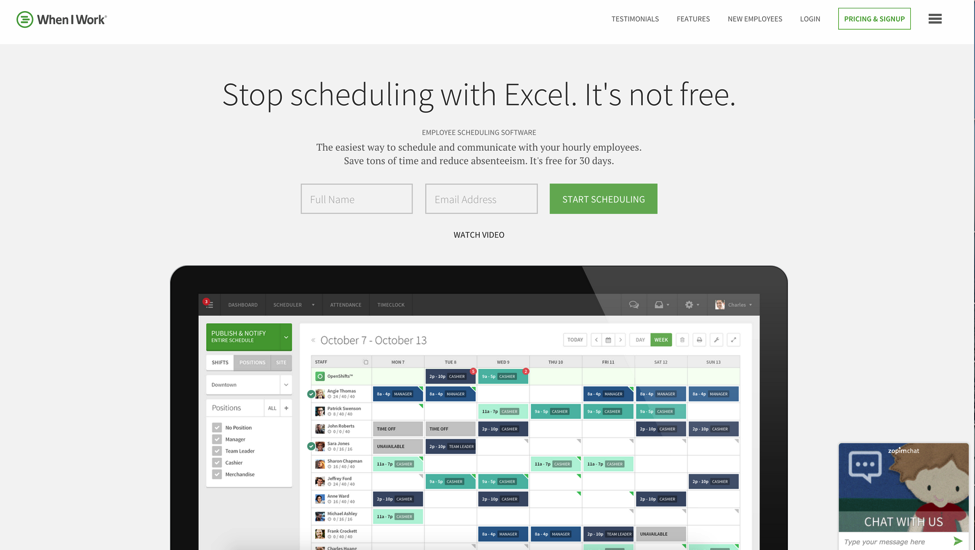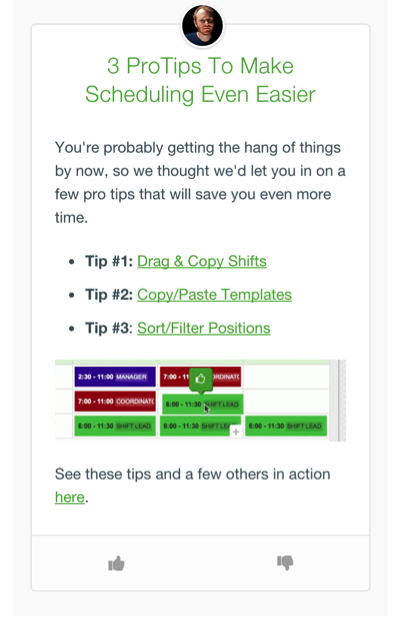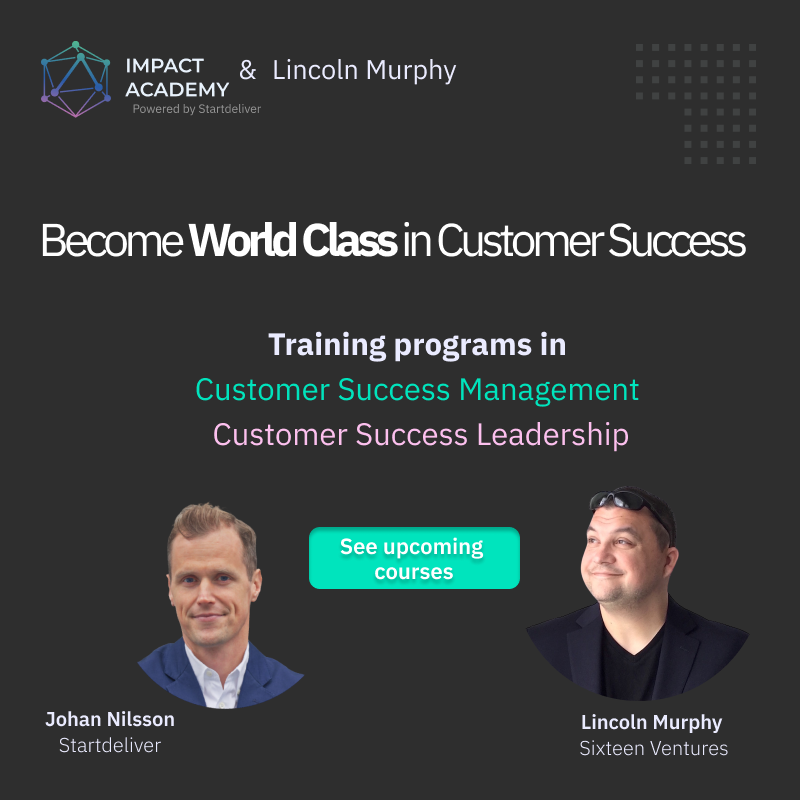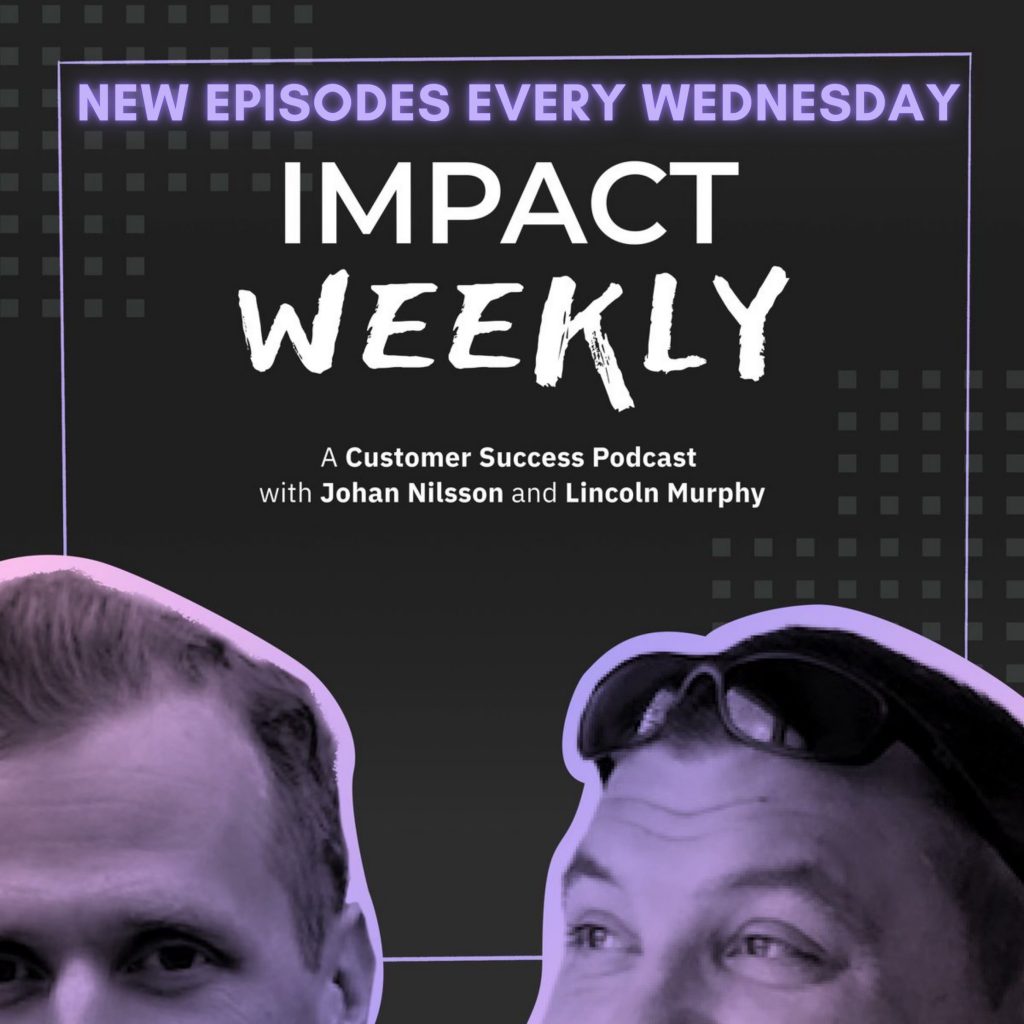 I spend a lot of time talking to SaaS companies about how they should identify their Ideal Customers, understand how they operate, know what their Desired Outcome is, listen to what they say, etc. etc.
I spend a lot of time talking to SaaS companies about how they should identify their Ideal Customers, understand how they operate, know what their Desired Outcome is, listen to what they say, etc. etc.
Whether it’s a focus on acquiring new customers, working to engage prospects already in the pipeline or customers you’ve just acquired… or nurturing and growing your long-time customers, knowing how they operate and the words they use in those operations is critical.
Well, a friend of mine took this idea of “listening to what your customers say” to the extreme by literally getting his customers to write his marketing copy for him. Genius!
His name is Sujan Patel and he’s VP Marketing at When I Work, an HR SaaS product specifically for companies with hourly employees (and the scheduling headaches therein) and I’ll let him share exactly what he did and how it worked out.
Take it away Sujan…
What Happens When You Let Customers Write Your Marketing Copy
Or… What Happens When You Actually Listen To Your Customers!?!
As a seasoned marketer and former CEO of a multi-million dollar marketing agency, I’m a little embarrassed to say that I never really fully recognized the true value of personally talking with customers until just a few months ago. Its not that I didn’t understand the importance of customer engagement and support – I did.
But I never made it an ongoing part of my own day-to-day responsibilities as the former CEO of digital marketing agency Single Grain or as the VP of Marketing for When I Work, the SaaS startup that I work for now.
But that all changed at the end of 2014 after I was able to boost conversions by over 30 percent as a result of spending two weeks working as a customer support agent for When I Work.
Here’s how it happened:
It Started With a Simple Experiment
It all started back in November of last year when I set out on a mission to learn everything I could about our users. I wanted to find out what makes them decide whether or not to convert. After reading that Amazon founder and CEO Jeff Bezos (along with hundreds of his managers) attends two days of call-center training each year in an effort to truly understand his customers, I was inspired to do something similar at When I Work.
As an experiment and personal challenge, I decided to immerse myself in our support department for two full weeks in hopes of learning as much as I possibly could about our users and our processes.
Diving Head First Into Customer Support
After spending the majority of my first day getting trained in and brought up to speed by the head of our customer support department, I got my first taste of customer interaction during day 2 when I was asked to start answering tickets and responding to questions from users over live chat.
By day 3, I was feeling pretty comfortable and confident in my ability to help users, so I began to let myself think more like a marketer again. I started inserting a handful of strategic questions into conversations—questions like “what made you sign up for a trial?,” “what’s your biggest challenge or frustration when it comes to scheduling?,” and “what’s preventing you from upgrading to a paid account right now?”
The feedback and answers I got were so good and genuinely helpful that by day 5, I was literally picking up the phone and calling people within minutes of them signing up for a trial to talk to them about their businesses, their pain points, their objections, their questions, and, of course, our product.
Halfway through my experiment things were going so well that I decided to take things even further by setting up Intercom as an additional way to collect feedback from users.
I was so excited about the conversations I was having with our users that I wrapped the second and final week of my experiment up by booking plane tickets for me and various team leaders to attend upcoming trade shows so that we could all have the opportunity to actually talk with and learn from our prospects and customers in-person. In the two trade shows I attended personally, I ended up talking to over 200 of our users over the span of four days.
What I Learned From My Experiment
Before I dive into how I used all the feedback I collected to ultimately boost conversions, I want to start by outlining what I learned. It really came down to three things:
1. I learned that we were focusing on the wrong value proposition.
At When I Work, our main value proposition has always been that we can save small business owners a lot of time. Business owners and managers who use our app to schedule their hourly employees instead of using programs like Excel can typically save 8 hours or more each week.
Saving time has always been the focus of our marketing copy.
What I learned from our customers, however, is the idea of saving time isn’t why they’ve decided to use or keep using our app. They care way more about features and solutions.
2. I learned that a big chunk of our customers are former Excel-users.
During my experiment I also determined that over half of our new inbound trials in our “businesses that have under 20 employees or less” category are currently using Excel to schedule their teams. What I also learned was that a lot of these people felt overwhelmed going from scheduling their employees using Excel to scheduling using our app. Its a big change for a lot of business owners who are used to doing everything the old fashioned way.
3. I learned that we don’t spend enough time continuing to sell to or educate our users after they’ve actually converted.
Finally, I learned that we really don’t spend enough time selling our users on our features once they become customers. I lot of people I talked to either didn’t know that certain features existed, or if they did know, they didn’t know how to actually use them.
How I Used Customer Feedback To Actually Boost Conversions
With this new knowledge in hand, we made the following changes in an effort to address issues, make improvements, and boost conversions:
1. We created new feature-focused Facebook ads.
The first thing I did was launch new Facebook ads that focused on features. As mentioned, the messaging in our previous ads focused on the value proposition of saving time. We used language like:
- Save 8 hours per week on employee scheduling
- Spend less time scheduling your employees
- Spend less time scheduling and more time doing what you love
With the feedback from customers, we launched new ads that promoted the features people talked to us about most, like:
- Shift Reminder Text Messages
- Employee Availability
- Shift Acknowledgment
For these ads, we used language like:
- Make sure your employees get to work on time by sending them text message reminders about their upcoming shifts.
- Schedule your employees when they’re actually available to work.
- Stop your tardy employees from claiming they never saw the schedule.
- Since launching these new feature-focused ads, we’ve seen a 43% increase in conversion to trials.
2. We ran homepage copy A/B tests that targeted Excel users.

The second thing I did was write new copy to A/B test on our homepage that directly targeted people who use Excel to schedule their employees.
As mentioned, through my interaction with customers I determined that over half of our new inbound trials were coming from businesses that have 20 employees or less, and that nearly all of these businesses scheduled their employees using Excel before switching to When I Work.
Since launching these A/B tests, we’ve seen a 54% increase in conversion to trials.
3. We created an entire implementation assistance team and put them in charge of uploading Excel schedules for trial users.
The third thing I did was present a solution for the ‘moving from Excel challenge that a lot of our users face. To fix the problem and reduce friction, we ended up creating a small team of implementation assistance specialists whose sole job is to help trial users upload their existing Excel schedules into our app.
So far we’ve seen a 225% increase in conversions from this single tactic alone.
4. We made revisions our onboarding messages and marketing automation.
The fourth thing I did was make significant revisions to our onboarding messages and marketing automation. As mentioned above, I learned from my interaction with users that we weren’t spending enough time educating, or “selling,” users on our features and product once they actually become customers. To address this issue, we added new emails to our onboarding drip campaigns that were geared toward education.

Since making these revisions, we’ve seen a 6% increase in LTV so far (only 30 days have passed since we made these revisions).
5. We launched behavior-based messaging in the app
Finally, as a result of my experiment we also decided to launch behavior-based messaging in the app using Intercom. Its only been a few weeks since we started using the service, but we’ve already started to see a 15% increase in conversions (within the first month) and have been able to improve click-through rates in our email campaigns by 41 percent and reduce outbound emails by 70%.
Final Thoughts
Taking the time to actually talk and listen to customers ended up being an incredibly valuable and rewarding experience for me. If you’re running a business or marketing department and you’re wondering how to take your business to the next level, I challenge you to do something similar to what I did. Spend a few hours, days, or weeks talking to your customers and learning more about them. Authentically engage with them, be open to criticism and honesty, and use the feedback you get to make improvements to your products, your processes, and your business as a whole.
Want to learn about more growth strategies like this? Download my new book: 100 Days of Growth. It’s packed full of 100 actionable tips that you can use to build brand awareness, boost customer acquisition, and grow your startup fast. Every tip in the book includes a summary, examples of use, recommended implementation tools, links to helpful resources and case studies, and the three steps you need to take to actually implement the tip being presented.
About Sujan Patel
Sujan Patel is the VP of Marketing at When I Work and author of the book 100 Days of Growth. He’s helped companies like Mint, TurboTax, Salesforce, and others land more customers, make more money, and grow their businesses. As the Founder and former CEO of Single Grain, he grew his business from a bootstrapped consulting startup to a multi-million dollar digital marketing agency.
Afterword by Lincoln
Hey… Lincoln here again.
There was so much actionable awesomeness in what Sujan had to say that I don’t have a lot to add. Listen to what he said, buy his book, and use this way of thinking across the customer lifecycle.
Think of this not only as a way to accelerate your Customer Acquisition process (imagine writing cold prospecting emails using words your customers have given you), but to guide the Customer and User Onboarding process, and even to drive your Customer Success initiative.
Awesome.


